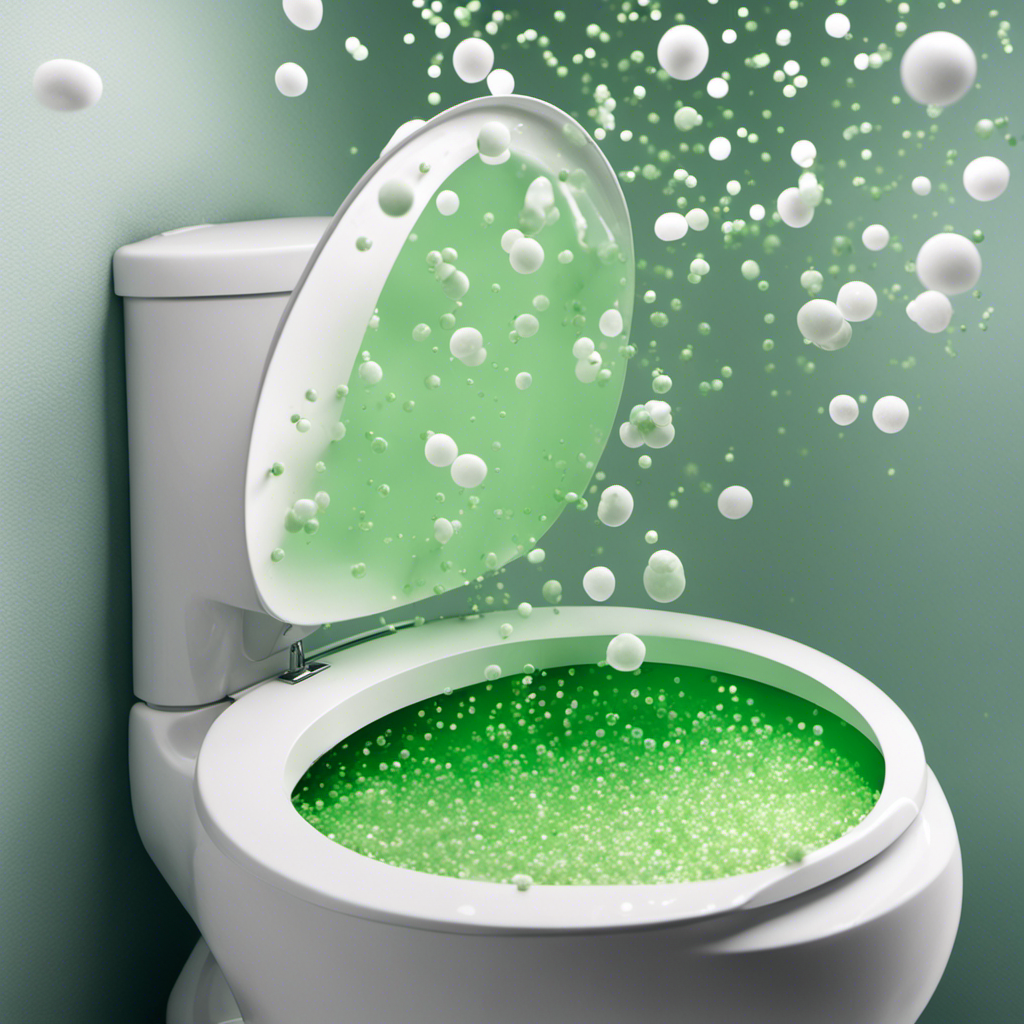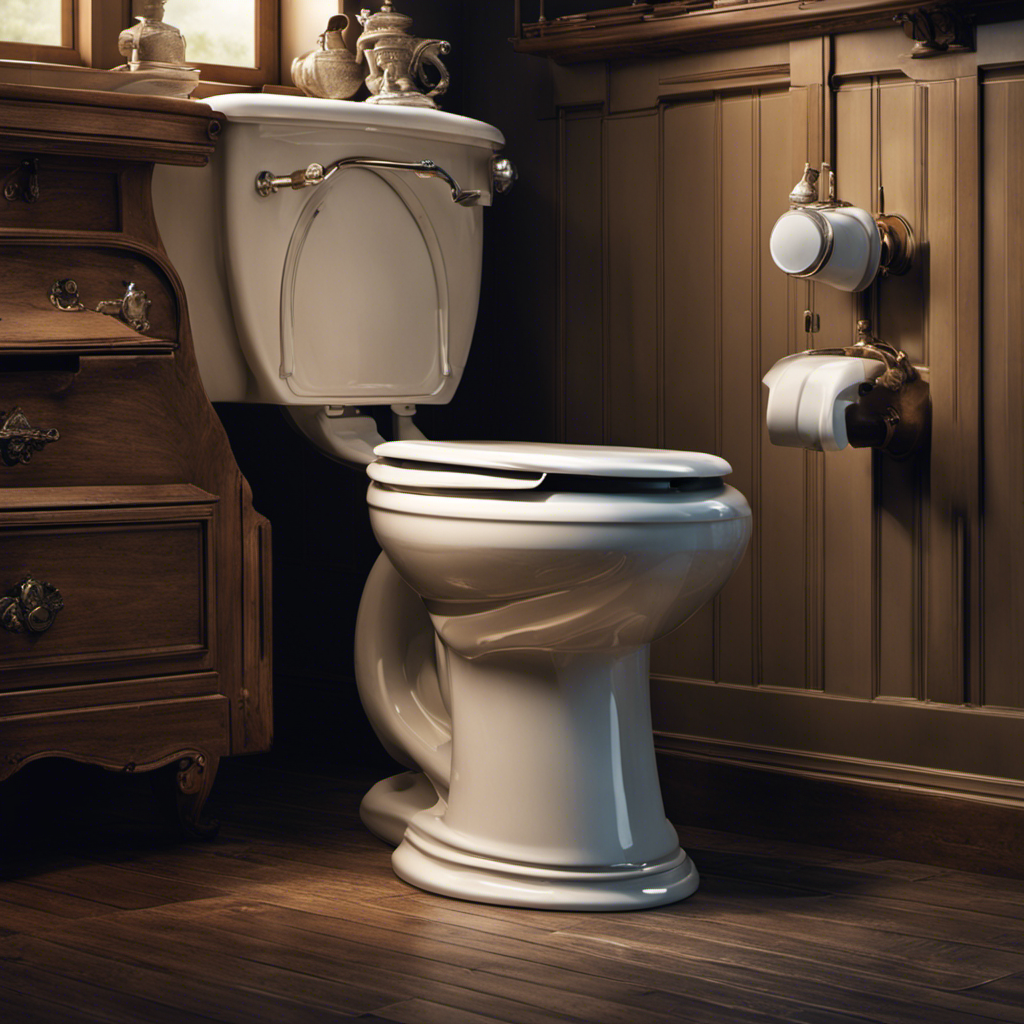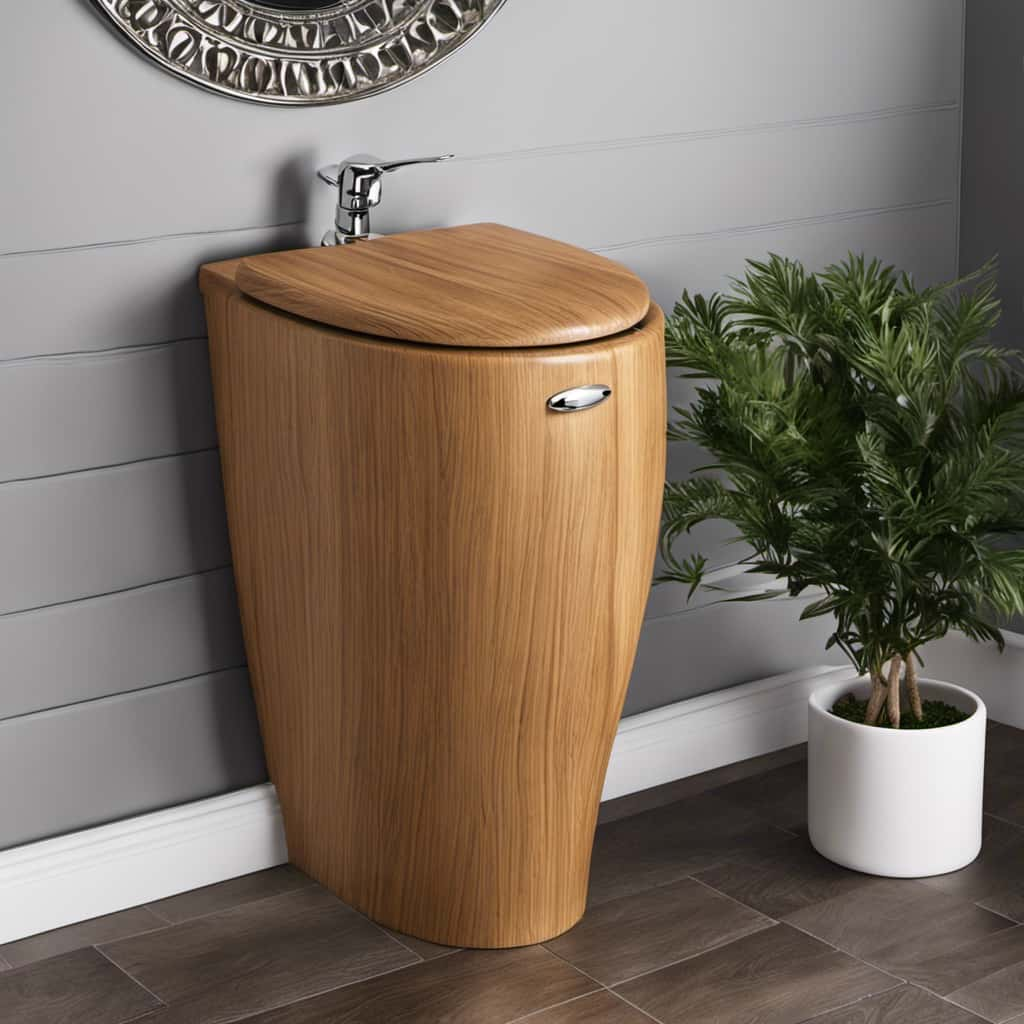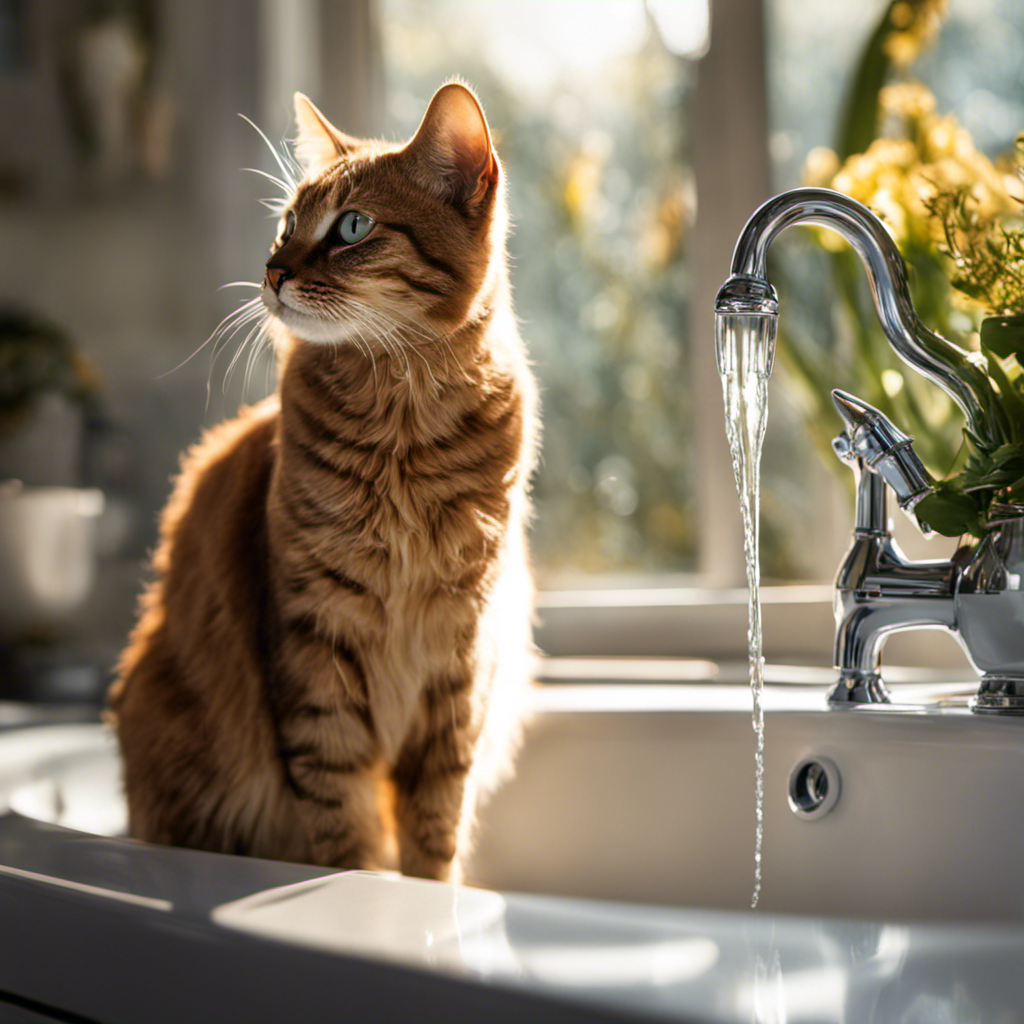Hey there, ever walked into your bathroom only to be hit by an unpleasant odor coming from your toilet? Trust me, I’ve been there too. But don’t worry, I’ve got you covered.
In this article, I’ll be diving into the common causes of toilet odor, explaining what sewer gas is and its effects, teaching you how to identify leaks and blockages, and providing effective solutions to eliminate that pesky smell.
Let’s get to the bottom of this toilet mystery and make your bathroom fresh and clean again!
Key Takeaways
- Clogged pipes and blockages can cause toilet odor, so regular maintenance and good flushing habits are important.
- Sewer gas, which is composed of various gases including ammonia and methane, can be harmful if inhaled in high concentrations or ignited.
- Leaks and blockages in the toilet can contribute to unpleasant odors, so it is important to check for and fix these issues.
- Proper cleaning and maintenance, such as using toilet cleaner and scrubbing the bowl, can help eliminate toilet odor.
Common Causes of Toilet Odor
One of the most common causes of toilet odor is a clogged pipe. When the pipes are blocked, sewage and waste cannot flow properly, leading to unpleasant smells. This can happen due to a buildup of toilet paper, foreign objects, or even tree roots infiltrating the pipes.
To prevent toilet smell caused by clogged pipes, it is important to practice good flushing habits. Avoid flushing anything other than toilet paper and human waste down the toilet. Regular maintenance, such as using a plunger or a drain snake, can also help prevent clogs.
Additionally, consider using enzyme-based cleaners regularly to keep the pipes clean and free from odor-causing bacteria. By taking these preventive measures, you can keep your toilet smelling fresh and eliminate the unpleasant odor caused by clogged pipes.
Understanding Sewer Gas and Its Effects
If you’re experiencing a foul odor, it could be due to sewer gas and its potential effects. Sewer gas is a mixture of gases that includes ammonia, methane, carbon dioxide, and hydrogen sulfide.
While sewer gas itself is not toxic, it can contain harmful substances that pose health risks if inhaled in high concentrations. Here are some dangers and health risks associated with sewer gas:
-
Fire and explosion hazards: Sewer gas is highly flammable and can ignite if exposed to an open flame or spark.
-
Irritation and respiratory issues: Inhaling sewer gas can cause irritation to the eyes, nose, and throat. Prolonged exposure can lead to respiratory problems such as bronchitis or pneumonia.
-
Headaches and dizziness: High levels of hydrogen sulfide in sewer gas can cause headaches, dizziness, and even loss of consciousness.
To prevent these risks, it is crucial to address any sewer gas issues promptly. Regular maintenance and inspections of plumbing systems can help detect and fix leaks or faulty venting, ensuring the safe removal of sewer gases.
Identifying Leaks and Blockages in Your Toilet
To identify leaks or blockages in your toilet, start by checking the water level in the tank. If the water level is too low, it could indicate a blockage in the plumbing.
You can try using a plunger to dislodge any clogs in the toilet bowl. Make sure to create a tight seal with the plunger and apply firm pressure.
If the blockage persists, you may need to use a plumbing snake to clear the obstruction.
Leaks in the toilet bowl can be identified by adding a few drops of food coloring to the tank water. If the color appears in the bowl without flushing, there is a leak.
In this case, you may need to replace the flapper or valve to fix the issue. Remember to turn off the water supply before making any repairs.
How to Properly Clean and Maintain Your Toilet
When cleaning and maintaining your toilet, it’s important to use a toilet brush to scrub the bowl and remove any stains. Regular cleaning can prevent the buildup of grime and bacteria, keeping your toilet fresh and hygienic. Here are some effective cleaning techniques for proper toilet maintenance:
- Start by applying a toilet cleaner or homemade solution to the inside of the bowl.
- Use a toilet brush in a circular motion to scrub the entire surface, paying extra attention to the waterline and under the rim.
- Flush the toilet to rinse away the cleaner and debris.
For stubborn stains, let the cleaner sit for a few minutes before scrubbing again.
Don’t forget to clean the toilet seat, lid, and exterior with a disinfectant wipe or cloth.
Finally, regularly sanitize your toilet brush by soaking it in a mixture of bleach and water.
Following these cleaning techniques will help you keep your toilet clean, fresh, and odor-free.
Effective Solutions for Eliminating Toilet Odor
One effective solution for eliminating toilet odor is to regularly use a toilet bowl cleaner that contains deodorizing agents. These cleaners not only help to remove stains and bacteria, but also leave a fresh scent behind. However, if you prefer natural deodorizers for toilets, there are several DIY remedies you can try. One option is to mix baking soda and vinegar to create a natural cleaning solution. Simply sprinkle the baking soda into the toilet bowl, then pour vinegar on top. Let the mixture sit for a few minutes before scrubbing and flushing. Another natural deodorizer is essential oils. Add a few drops of your favorite scent to the inside of the toilet paper roll or mix them with water in a spray bottle and mist the air around the toilet. By using these natural deodorizers, you can keep your toilet smelling fresh without relying on harsh chemicals.
| Natural Deodorizers | DIY Toilet Odor Remedies |
|---|---|
| Baking soda | Baking soda and vinegar |
| Essential oils | Essential oil spray |
Frequently Asked Questions
What Are Some Common Household Products That Can Be Used to Eliminate Toilet Odor?
Some common household products like baking soda, vinegar, and lemon can be used to eliminate toilet odor. They are natural remedies that can neutralize unpleasant smells and leave your toilet smelling fresh and clean.
Can Sewer Gas Be Harmful to Human Health?
Sewer gas exposure can pose health risks. It contains harmful gases like methane and hydrogen sulfide. These can cause headaches, dizziness, nausea, and respiratory issues. Proper ventilation, regular plumbing maintenance, and using drain traps can help prevent sewer gas from entering your home.
How Can I Tell if There Is a Leak in My Toilet?
To fix a toilet leak, look for signs such as water pooling around the base, a constantly running toilet, or a noticeable drop in water level. These could indicate a leak that needs immediate attention.
Is It Necessary to Hire a Professional Plumber to Fix a Toilet Odor Problem?
No, it’s not necessary to hire a professional plumber for a toilet odor problem. There are DIY toilet odor remedies that can help eliminate the smell. I’ll share some effective solutions with you.
Are There Any Long-Term Solutions for Preventing Toilet Odor?
There are several toilet odor prevention methods that can be used. Some natural remedies for toilet smell include regularly cleaning the toilet, using baking soda or vinegar, and ensuring proper ventilation in the bathroom.
Conclusion
In conclusion, it’s important to understand that a smelly toilet can be caused by various factors. These factors include leaks, blockages, and sewer gas. By identifying the root cause of the odor and taking necessary actions, you can effectively eliminate the unpleasant smell.
Remember, ‘prevention is better than cure.’ So, regularly clean and maintain your toilet to prevent future odor issues. Don’t let a stinky toilet ruin your day. Take charge and ensure a fresh and clean bathroom experience for yourself and your guests.










